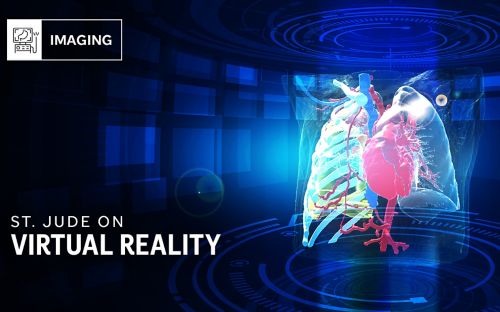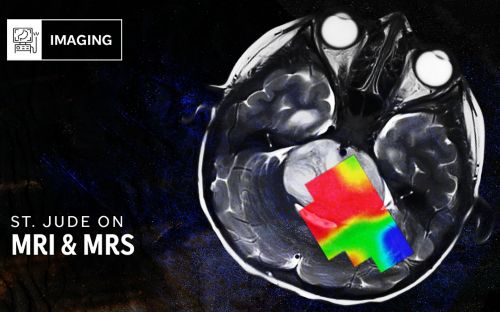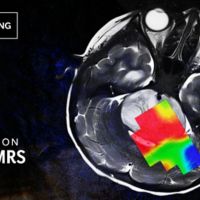Illuminating dynamics of G-protein-coupled receptors

Humans send each other non-verbal signals all the time — whether it’s a wink or an eye roll, pointing or nudging someone with an elbow, communication is varied and complex. The cells that make up the human body communicate, too, with certain proteins playing a more critical role in the flow of information. G-protein-coupled receptors (GPCRs) are communication champions, serving alongside ion channels as the gateway for cells to receive signals from the surrounding environment. Those signals can be communicated through light, hormones, neurotransmitters, odors or really any internal or external stimuli.
GPCRs are present in every multi-cellular organism, from simple fungi to complex mammals. Yet, they have maintained an impressively conserved structure: a substrate binding site outside the cell and seven transmembrane segments to relay this signal to the cytoplasm inside. Communication inside the body is a numbers game. About 4% of the human genome codes exclusively for different GPCRs — translating to approximately 800 of these proteins which function in their own environments with specific information to relay.
With this key role, it’s no surprise that GPCRs are heavily studied. They are the target of one-third of all Food and Drug Administration (FDA)-approved pharmaceuticals, making them crucial in the hunt for novel therapeutics. At St. Jude, scientists combine structural biology and data science expertise, cutting-edge technology and collaborative research to understand GPCRs like never before.
Bringing life to still images
Movement, whether of cells or their components, is fundamental to life. This includes the subtle yet precise movements of GPCRs. Hence, to understand how GPCRs or other cellular components work, scientists need to be able to capture and visualize that motion, which can be difficult. Until recently, researchers have relied primarily on techniques that provide snapshots, such as crystallography, to understand GPCR movements associated with function. For their work delineating the first high-resolution structure of a GPCR, the beta-2 adrenergic receptor (B2AR), and how it changed conformation upon activation, Brian Kobilka, MD, of Stanford University and Robert Lefkowitz, MD, of Duke University, were awarded the 2012 Nobel Prize in Chemistry. Rather than an endpoint, however, this signaled the start of GPCR investigation with a fresh perspective – a dynamic perspective.
Crystallography is a static, ensemble technique, meaning it provides an average of all movements in a structure within one model. While this provided essential insights into the nature of the activation mechanism, which has now been extended to a multitude of distinct GPCRs, such endeavors lack the fine dimensions of time and diversity in the behaviors of individual molecules in the population.
Scott Blanchard, PhD, St. Jude Departments of Structural Biology and Chemical Biology & Therapeutics, a leader in the advancement of single-molecule imaging techniques, collaborated with Kobilka to uncover this information. In a work published in Nature in 2017, the team used single-molecule imaging to quantify the B2AR activation mechanism by specific ligands using direct measurements of B2AR motion.
“Crystallographic structures have been solved of GPCRs bound to ligands of different strengths, and they are all largely the same structure,” Blanchard said. “It’s difficult to infer the nuances of ligand binding when observing static endpoints of the activation process. Single-molecule methods are designed to provide dynamic insights into how structures change as a function of time. The approach is broadly applicable to investigations of diverse biological systems. The goal is to observe dynamic processes as they occur in nature.”
The dynamics the researchers were interested in relate to how GPCRs interact with physiological ligands and subsequently convey information as a specific signal within the cell. The process is quick, usually on the milliseconds-to-seconds timescale. Ligand binding triggers the GPCR to change its dynamic properties and conformation (structure), which are both communicated by its seven transmembrane segments across cellular membranes to facilitate signaling processes within the cell.
The concept of “efficacy” is the core of understanding these GPCR signaling processes. Efficacy in this context measures how successfully a signal can be communicated. It is tied to the rate at which a ligand binds, how long it stays bound to the GPCR, its ability to induce conformational change, or it could be a combination of these things that leads to a net dynamic change. Through single-molecule experiments, the full spectrum of GPCR structure and function can begin to be revealed.
“Our Nature paper with Kobilka was a first effort to visualize efficacy in action and how efficacy can be defined by dynamics measurements,” Blanchard said. “These were first-of-a-kind measurements.”
Through space and time: Understanding GPCR dynamics
To understand GPCR function and dynamics, M. Madan Babu, PhD, St. Jude Department of Structural Biology and Center of Excellence for Data-Driven Discovery, uses an integrative data science approach.
“Every GPCR is used in so many different types of physiological functions that the insights you get from studying one receptor could potentially be transferred to many other receptors,” Babu said.
Understanding GPCR structure, function and dynamics has been at the front of Babu’s research endeavors since the publication of the study of all available structures at the time by his group in Nature in 2013, where they revealed the molecular signatures of GPCRs. More recently, at St. Jude, his group, in collaboration with Vaidehi Nagarajan, PhD at the Beckman Research Institute of City of Hope, has used large-scale data analysis and molecular dynamics simulations to draw up a “spatiotemporal code” for interactions between GPCRs and G-proteins, which defines how receptors couple selectively to the right G-protein. In this computational study published in Nature Communications in 2022, the researchers showed that interactions at the surface of the GPCR dynamically translate through the receptor depending on the timescale of the interaction (how long it occurs) of specific residues. This factor of timing results in specific structural changes sensed by the G-protein inside the cell and defines which G-protein will respond.
The dynamic movements that GPCRs undergo are not limited to their structure. The cell membrane is a system in constant flux, a highly populated network within which GPCRs are just a piece of a larger collective of biomolecules responsible for relaying information across the cellular threshold. Observing GPCRs within this network adds a key spatial aspect to their function. In Nature Methods in 2021, Blanchard and Jonathan Javitch, PhD, of Columbia University, shed light on the dimeric nature of GPCRs — how two individual molecules come together to perform their function.
“We were able to track the motions of GPCRs on the surface of cells one GPCR at a time,” Blanchard said. “We then asked what the conformation was of that GPCR, how it interacted with other GPCRs, and how its dynamics changed.”
Taking a “big picture” perspective
Perhaps no GPCR is more publicly relevant than the mu-opioid receptor, the target for drugs such as morphine and fentanyl. Against the backdrop of drug addiction, understanding how the receptor functions and how genetic variation in this receptor (i.e., polymorphisms) in the human population influence drug response and treatment have never been more crucial. In research published in Cell in 2018, the researchers noted that the mu-opioid receptor is one of the most polymorphic receptors in the human population and that variation in this receptor could lead to ineffective, altered or adverse drug responses. This study provided the first insights into the landscape of variation of all human GPCRs from the perspective of human evolution.
“We looked at all the mutations in the genome of over 60,000 individuals from different parts of the world in the human population to describe the pharmacogenomic landscape of GPCRs,” Babu added, “and we noticed that the mu-opioid receptor is one of the most altered receptors. That means some people can be responders to certain kinds of pain medication, and some people may not be responders.”
Furthermore, in work published in Nature in 2020, Babu and collaborators looked into how individual GPCRs can spatially diversify through a process called alternative splicing and how different splice variants can be assembled in different ways, shedding additional light on why some people can respond to drugs differently than others.
“We noticed that spatially distinct human tissues express altered versions of the same receptor called alternative splice isoforms,” Babu explained. “These receptors come from the same gene, but the splicing mechanism results in a missing part of the sequence or a different sequence input.” Alternative splice isoforms have drastically different behaviors, resulting in different dynamics. This, of course, results in different drug responses.
“In some tissues, a receptor may respond to a drug for a much longer period than the one in another tissue if it did not have that alternative splicing isoform,” Babu explained. “The signal will be more rapidly internalized. This means you can have the same drug concentration but different response rates in different tissues.”
Understanding the variation and dynamics of this GPCR is potentially vital to reducing the side effects of mu-opioid drugs. “We study these changes and investigate what happens to the dynamics,” Babu said. “They help explain why some drugs affect individuals differently.”
Collaborative efforts pave the way forward
Combining standard ensemble techniques like crystallography with single-molecule approaches, large-scale data analysis and other cutting-edge techniques offers the potential to learn so much more about GPCR function and regulation. “Everyone is pushing the frontiers of the methods they are interested in and experts in,” Babu explains. “We all need to see each other’s perspective to have a unified view of a very complex system because each of the 800 GPCRs is likely to be an important drug target.”
Studying the spatial and temporal arrangement of GPCRs is, and must be, a collaborative effort. Knowing the right questions to ask is almost as important as the information gained by doing the research. As Blanchard puts it, “The pitfall is looking for your keys under the lamp post because that’s where you can see.”
As they continue to reveal the biology of GPCRs by leveraging the lenses of dynamics through space and time, Blanchard and Babu hope that their ongoing collaborative efforts at St. Jude and beyond will provide a global perspective that thoroughly illuminates GPCR function.






